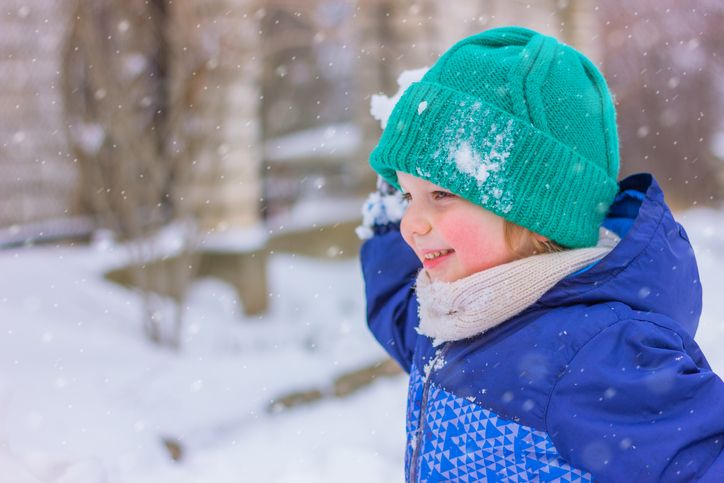Cabin fever can set in quickly during winter months. Kids itch to get outside, and parents would love nothing more than to let them get some fresh air.
But no parent wants to see their child trade “cabin fever” for an actual fever or injury. Thankfully, with the right preparation and adjusting of expectations, kids can enjoy playing outside. And parents can stay assured their child is safe.
Katie LaRue-Martin, team lead athletic trainer with Kettering Health, explains what you need to know to keep children safe and happy outside this winter.
Keep an eye on their diet
Katie knows we tend to view dehydration as a “usual suspect” in the summer. But staying hydrated is just as important in the winter. The drier air and the uptick in sugary foods during the holidays can quickly spell trouble when it comes to dehydration.
So, even before you bundle up your child, make sure you monitor their fluids. Try to swap water for surgery drinks. A general rule of thumb is that for activity lasting less than an hour, water is enough to stay hydrated. If activity lasts longer, add hydrating drinks that contain electrolytes and carbohydrates.
And make sure children get nutritious snacks both before and after physical activity.
Adjust expectations for the weather
Don’t be afraid to adjust how long kids are allowed outside in the cold. Especially in weather that’s more dangerous. If it’s snowy or icy, children will need to return inside sooner to warm up. And you’ll want to make sure you keep a closer eye to prevent and respond to any accidents and injuries.
Always dress children in adequate clothing and layers for cold temperatures.
Kids “should wear an appropriate amount of clothing based on their activity,” Katie says. “They should cover as much skin as possible and change out of cold, wet clothes into dry clothes as needed.”
Know the signs of cold injury
Get to know what early symptoms of a cold injury or illness to look for, says Katie. These include
- Changes in skin color
- Stiffness
- Tingling
- Vigorous shivering
- Difficulty using fingers or toes
- Increased fatigue
For symptoms of cold injury, seek emergency medical care. For falls, sprains or minor lacerations, take your child to the closest urgent care facility.
Keep them warm
Prolonged exposure to cold temperatures can decrease blood flow and cause shivering. Call children inside or make a plan with preteens and teenagers to interrupt outside activity with getting warm inside.
Be prepared
For any symptoms of a cold injury, or for something worse, know where the closest emergency room is.










